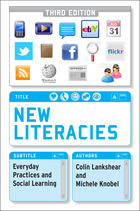Thursday, March 03, 2005
Alternate Realities
Some people have parallel universes thrust on them daily, others like to choose their alternate realities instead. Alternative reality gaming is doing a fantastic job of blurring old distinctions between meatspace and cyberspace. These usually whodunnit-style games are played both online and offline, with game hosts making use of "found" texts (e.g., postcards, billboards) newspaper advertisements, video narratives, text messages and phone calls to players, and so on, as part of establishing a web of clues to be unravelled in order to “solve” the game’s puzzle.
One of the more recent alternative reality games to emerge is Perplex City, which, according to the New York Times (rego required), was officially launched by means of an advertisement in a US newspaper that read that read:
LOST. The Cube," read the ad, posted at the top of the paper's "Notices" section. "Reward Offered. Not only an object of great significance to the city but also a technological wonder."
The ad has appeared subsequently in a host of newspapers around the world. Games like Perplex City put a whole new spin on “role play games”.
An interesting dimension of alternate reality gaming is that the game tends to generate tight-knit, collaborative affinity spaces, such as lively game-dedicated online discussion groups that use their collective intelligence, or “hive brain”, to unlock clues. For example, The NYT describes how already
The collective mind has come up with sometimes astonishing information, however. One series of digits featured in an early teaser advertisement was deciphered as the ISBN number of science fiction author William Gibson's Pattern Recognition, with specific words on certain pages spelling out a message.
The NYT also raises some interesting questions regarding marketing and alternate reality playing, although my own position is that their fears are overblown. Alternate reality games have been used promote Spielberg’s movie, A.I. and by Microsoft, to promote is video game, Halo, but the actual alternate reality game—and the player affinity spaces that spring up around it--appears to be what is most compelling for players, rather than the game’s association with a commercial product.
We first became aware of alternate reality gaming in 2001 with the launch of
Majestic, and later, Uncle Roy All Around You and bot fighting. We never had the chance to play (we were based mostly in Mexico at the time, and game coverage didn’t include our part of the world), but have long been interested in the implications of these games for how we will move through our respective universes in the not too distant future (Rheingold’s “always on, always available” internet model comes to mind here).
So get out there and blur meatspace/cyberspace distinctions and bend your realities a little. See you in the Perplex City discussion forums!









